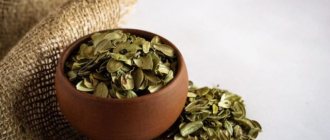Pomelo is a fruit that was given to the world by China. This exotic fruit belongs to the citrus family, and it is one of the largest representatives of this family. The taste of pomelo has notes of orange, grapefruit, lemon and lime.
The pulp of the fruit consists of large “capsules” with delicate sweet and sour citrus juice. The taste has a slight bitterness, like grapefruit, the unobtrusive sweetness of a ripe orange, a spicy aroma with pronounced lime-lemon notes. For this taste and aroma composition, many fall in love with pomelo irrevocably!
The benefits of this fruit for the human body are also very great. Therefore, it is worth getting acquainted with a detailed description of the properties and features of this exotic fruit.
Pomelo: health benefits and harms
To understand how pomelo is beneficial for the body, you should look at the composition of this fruit. After all, the main direction of the properties of the fruit is determined by the original chemical “filling”.
The ripe pomelo fruit contains a balanced set of vitamins and minerals.
- Vitamins: C, B1, B6.
- Minerals: potassium, phosphorus, copper, iron, zinc.
- Bioactive substances: antioxidants, enzymes, organic acids, essential oils.
Nutritional value per 100 grams of product:
- proteins - 0.76 g;
- fats - 0.04 g;
- carbohydrates - 8.62 g.
The total energy value is 38 Kcal.
The fruit contains about 1 gram of dietary fiber and water.
Particular attention should be paid to the content of ascorbic acid. In terms of vitamin C richness, pomelo outranks lemon, orange and lime in the leadership race. One medium-sized pomelo contains up to 68% ascorbic acid. If you eat a couple of slices of fresh fruit a day, you can well nourish your body with the vitamin C it needs to boost immunity and maintain overall health.
But in terms of the content of vitamins A and PP (folic acid), as well as calcium and iron, the benefits of pomelo are greatly overestimated. Although these substances are present in the fruit, their share is so small that the choice of pomelo as a source of the listed microelements is biased. Simply put, to replenish iron deficiency in the body with the help of pomelo, you will have to eat a lot of juicy citrus pulp. Which cannot be called a useful solution at all.
How to use correctly, recommendations for use
Now you know about the beneficial and harmful properties of pomelo, you need to figure out how to use the fruit correctly.
It is recommended to eat pomelo fresh . Heat treatment leads to the loss of a large share of its beneficial properties.
The product must be peeled, then, having reached the fruit segments, the fibers must be pulled out of the film. The film is harmless, but it is not necessary to eat it, since it is bitter and thick.
You can safely eat the pulp itself , saturating the body with useful substances. You can replace your favorite but unhealthy sweets with fruit, and add it to salads.
You can eat pomelo at any time. Even if you use it in the evening, you don’t have to worry about your figure.
There are no clear instructions on how much the product can be eaten, but nutritionists recommend not eating more than half a juicy fruit per day .
About the pomelo fruit, watch the following video:
In cooking
Pomelo is actively used in cooking around the world. The pulp can be used to prepare delicious salads, decorate desserts, and sweets.
The peel of the fruit is used to make candied fruits, marmalade, and desserts.
The product is combined with other fruits, cheese, seafood, meat, nuts, so there are many recipes with its addition .
Pomelo salad:
For weight loss
Is pomelo good for weight loss? The low-calorie product can be safely used in the diet of those losing weight . It saturates well without leading to excess weight. You can replace them with the desserts you are used to.
There is even a special diet with pomelo for weight loss. It assumes the following daily menu:
- in the morning - 50 g of low-fat cheese, half a citrus fruit;
- For lunch, cook boiled fish with stewed or steamed vegetables;
- the afternoon snack will be a boiled egg and the rest of the pomelo;
- dinner will be as follows: boiled cauliflower, boiled egg, one apple and half a pomelo. It is allowed to drink tea or coffee, but without sugar. You can add a teaspoon of honey.
Two weeks of such a diet - and you will feel obvious results.
This material describes the healing properties of willow tea. Find out more!
You can learn about the beneficial properties and contraindications of ginger root for men from our article.
This material will tell you about the benefits of beets for pregnant women.
In the treatment of diseases
The very consumption of fresh pomelo has a healing effect on the body. There are a number of traditional medicine recipes that are used to combat various problems in the body:
- for the prevention of atherosclerosis . 100-150 g of pomelo should be finely chopped and mixed with a tablespoon of vegetable oil (olive or sunflower). To cleanse the walls of blood vessels from cholesterol deposits, use this mixture several times a week;
- with acute bronchitis and wet cough . Heat it to 40 degrees, drink in small sips. This will remove mucus from the bronchi;
- to relieve a sore throat accompanying a sore throat or acute respiratory infection , peel the pomelo slices, squeeze 100 ml of juice from them, dilute it with water in equal proportions. Use the resulting mixture as a mouth rinse throughout the day;
- to cleanse the intestines of toxins , replace breakfast with half a kilogram of pomelo. Next time, eat no earlier than 3-5 hours later.
How and where does pomelo grow?
The juicy pomelo fruits grow on trees native to the Pacific Islands and China. The tree is very tall - up to 10 meters in height. The fruits are also large - from 1 kilogram. The color of a ripe pomelo varies depending on the variety, and there are about a dozen of them. Pomelo can be bright yellow, greenish, or red. The pulp is usually soft yellow, maybe with a “pink”, red, deep pink. Pomelo is harvested from August to November. This period is considered the season of ripening of juicy citrus fruits. And the onset of the period of formation and ripening of the fruit is preceded by an incredibly beautiful flowering season. Pomelo blooms with large, fragrant flowers. Trees at this time are a true decoration of the environment.
This is interesting! In China, the pomelo is considered a symbol of prosperity and prosperity. Ripe fruit is given as a gift for the New Year and is presented as a symbolic present without any special reason, just as a sign of respect.
This tasty and healthy fruit was brought to Europe by the British navigator Shaddock. That is why in some countries the pomelo is known under a completely different name - sheddock.
How to choose a ripe pomelo?
To choose a ripe pomelo fruit, it is important to pay attention to several factors:
1. The aroma of the product (ripe citrus smells very tasty and its aroma can be heard even if you are at a short distance from it).
2. Fruit color (if the pomelo is ripe, it will have a uniform, beautiful yellow color on all sides; if you see brown, greenish or reddish spots on the product, it is better to refuse such a purchase).
3. Consistency (ripe fruits should not have strong compactions to the touch, which can be felt by slightly pressing on the peel).
4. The top of the pomelo (in ripened sweet fruits it is dense and usually about a centimeter in diameter, no more).
How to clean a broom?
Useful properties of pomelo
Thanks to its rich composition, the pomelo fruit is endowed with a lot of useful properties.
The benefits of pomelo for the body include the following features:
- pomelo has a beneficial effect on the gastrointestinal tract;
- promotes gentle, safe weight loss;
- removes excess fluid and toxins from the body;
- promotes the breakdown of adipose tissue;
- reduces blood pressure;
- neutralizes free radicals;
- prevents the development of heart and vascular diseases;
- supports intestinal function;
- accelerates metabolism;
- has a beneficial effect on the health of the nervous system;
- stabilizes hormonal levels.
The special value of pomelo is its high enzyme content, which promotes the rapid and reliable breakdown of fats. That is why pomelo is included in the list of staple products in many diets. Pomelo is a natural and safe “fat burner”.
This exotic fruit contains a large amount of fiber. Due to this, pomelo has a positive effect on intestinal function, improving the peristalsis of the intestinal muscles. The fiber also makes this fruit good for diabetics. The glycemic index of fresh pulp does not exceed 50. This means that when eating this product you should not expect sudden jumps in sugar. Carbohydrates are absorbed slowly, making the sugar curve smooth and not beyond a certain norm.
Important! One of the most valuable parts of the fruit is the veins. Many people mistakenly perceive them as the “garbage” component of the fruit. However, they have an important property for the intestines. With the help of veins, you can reliably cleanse this part of the body. Despite the bitter taste that the veins are endowed with, you should not throw them away, but rather try to eat them, at least a little.
Benefits for men and women
It is worth noting the benefits of pomelo for men. It is believed that the vitamin and mineral composition of this fruit helps restore and maintain male reproductive function. If you regularly eat pomelo, you can strengthen your male strength and increase the fertility of the seed.
For the female body, this fruit contains no less, but even more beneficial properties. Ladies will appreciate the saturation of this fruit with ascorbic acid during menstruation and menopause. Pomelo helps smooth out hormonal surges and has a mild analgesic and anti-inflammatory effect. Women, like men, benefit from eating pomelo in preparation for conception. And pomelo is a reliable assistant in preserving youth and beauty, as well as a fit figure. The fruit is actively used in home cosmetology, dietetics, and folk medicine.
During pregnancy and lactation
The benefits and harms of pomelo during the period of bearing and feeding a baby are ambiguous. On the one hand, this fruit saturates with useful vitamins and microelements. Pomelo helps intestinal function, which is very valuable during pregnancy and immediately after childbirth. At the beginning of pregnancy, pomelo helps to cope with toxicosis of the first trimester; in the final stage of gestation, this fruit is effective in combating the symptoms of late toxicosis, eliminates edema, and reduces blood pressure.
This fruit helps a woman recover from a difficult stage of life (pregnancy, childbirth) and provides the necessary amount of nutrients to the future and already born baby (through mother’s milk). However, on the other hand, pomelo is, first of all, a citrus, which has a high allergenicity rate. In each specific case, it is important to consult with a specialist to decide whether to include pomelo in the diet of a pregnant or lactating woman.
Pomelo for children
This fruit has undoubted benefits for children's bodies. For example, pomelo will be a very good addition to a child’s diet during the flu and cold season. This fruit is good as a source of potassium, phosphorus and magnesium for a growing body. However, children can try this fruit no earlier than they are 3 years old. The first samples of juicy pulp should be carried out with caution.
The child needs to be given a very small piece of pulp, and then carefully observe the body’s reaction. If the product is well tolerated, you will still have to limit the amount of citrus consumed. Children should not be given more than 1-2 cloves of pomelo once or twice a week.
How to properly clean a broom
Unlike tangerines, oranges and grapefruits, it is almost impossible to peel a pomelo by hand. The fruit has a thick peel, and the juicy slices are enclosed in dense shells with partitions. You will need a small sharp knife.
- Cut off the top by 1.5–2 centimeters.
- Divide the citrus zest with vertical movements of the knife into equal sectors.
- Using your hands, separate the “petals” of the peel from the pulp.
- Divide the pomelo into two parts, and then into slices.
- Using a knife, remove the pulp from the shells with seeds.
If the fruit is not too large, you can peel it in a circle, like potatoes.
The slices are eaten whole or divided into parts. In the latter case, no problems arise, since the pomelo pulp is externally dry and does not release juice.
We recommend: Common methods for storing eggplants at home
Pomelo: harm
In addition to its benefits, pomelo can also cause harm to the body. This can happen if you use this product carelessly, completely ignoring the list of contraindications.
There are such contraindications as:
- individual intolerance to citrus fruits, including pomelo;
- presence of food allergies to other foods (with caution);
- chronic hypotension;
- acute intestinal disorder;
- gastritis and peptic ulcer of the stomach, duodenum;
- chronic liver and kidney diseases;
- cholelithiasis;
- children under 3 years of age.
Any chronic diseases, as well as acute pathological conditions, may be associated with contraindications to the use of pomelo. If in any doubt, you should consult your doctor.
Particular harm to the pomelo lies in the peel. This part of the fetus is often treated with harmful and even toxic antibiotics. This treatment is used for long-term storage and transportation of crops. Therefore, you should not try the peel of these citrus fruits and use it for culinary purposes if you are not sure that the fruit was grown, imported and stored without the use of special chemical compounds (thiabendazole, imazalil, SOPP antibiotics).
In order to prevent negative consequences, it is worth following the recommended norms for using pomelo. An adult should not exceed 100–150 grams of pomelo pulp per day. It is important to consider other citrus fruits eaten during the day. If, for example, oranges, tangerines, and lemons were eaten during the day, it is important, taking into account the volume of citrus fruits consumed, to reduce the weight of the pomelo prepared for snacking.
The following negative consequences may occur when overeating citrus fruits:
- bloating, flatulence;
- stool disorder;
- inflammation of the gallbladder;
- rashes due to an allergic reaction;
- pathological decrease in blood pressure.
Such a clear manifestation of the negative consequences of eating pomelo is extremely rare! This happens in situations where the permissible norm is significantly exceeded or contraindications are ignored (not identified). In a normal situation, all the troubles associated with overeating this fruit are limited to mild stool upset and rashes such as hives.
Harmful properties and contraindications
The peel, which is generously treated with chemicals, can be harmful to human health. The toxic antibiotics SOPP, thiabendazole and imazalil are especially dangerous. These substances are sprinkled on citrus fruits to protect against premature spoilage, parasites and mold.
First, wash the fruit in hot water (so that the antibiotics do not transfer to your hands while peeling), and then completely remove the peel.
Don't overuse the broom. 100-150 grams per day will be enough. And that is provided that you have not eaten other citrus fruits. In case of an overdose, bloating, intestinal cramps, nausea and vomiting, heartburn, diarrhea, and skin rashes may occur.
We recommend: Recommendations on how to choose and clean the broom correctly
Regular abuse of pomelo increases the risk of kidney and gallstones, menstrual irregularities, and exacerbation of chronic inflammatory processes.
Some people are not allowed to eat the fruit. List of contraindications:
- increased acidity of gastric juice, gastritis, ulcers;
- allergy to citrus fruits;
- chronic diseases of the liver, kidneys and gall bladder (hepatitis, cirrhosis, pyelonephritis, pancreatitis, cholecystitis).
It is not recommended to eat pomelo while breastfeeding, as the citrus can cause skin rashes and colic in the baby. Hypotonic patients should limit their consumption of the fruit, as it lowers blood pressure.










